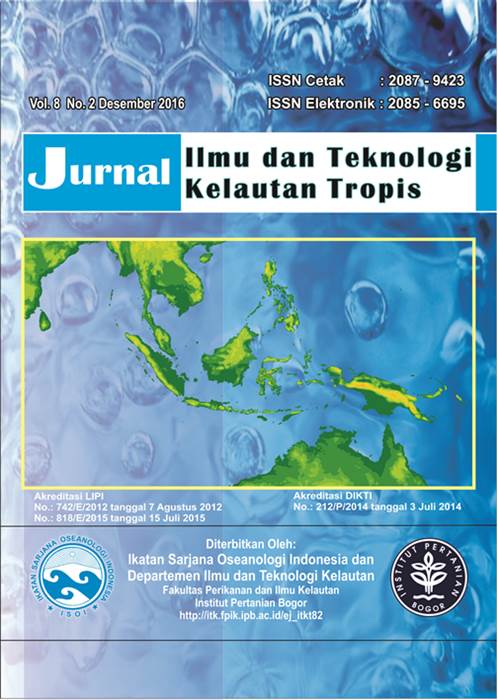HABITAT SUITABILITY AND ZONING ANALYSIS FOR GREEN TURTLE Chelonia mydas IN THE MARINE CONSERVATION AREAS OF PANGUMBAHAN TURTLE PARK, SUKABUMI
Abstract
This study reviews the suitability of habitat for the green turtle in the Pangumbahan Turtle Park. The purpose of this study is to evaluate the existing zoning system and to provide recommendations of alternative zoning approach based on ecological suitability turtle habitat. Observations and fieldwork were undertaken throughout the coastal area of Pangumbahan from January to June 2015 by collecting data which include nesting site for turtles, sand temperature and moisture content, width of the beach, surface slope of the beach, vegetation cover, seagrass and secondary data. Methods of data analysis consists of suitability analysis with the spatial approach using Geographic Information System. The results of the analysis of overlay method were classified into three classes of suitability, which include very suitable covering 6,91 hectares, suitable covering 14,60 hectares and less suitable covering 37,21 hectares. The current existing zones needs to be revised using the recommended zoning system. As an implementation of the findings from this study as well as to effectively manage the conservation area based on the green turtle ecology, it is highly recommended to do a zoning system which is based on the principal of the green turtles habitat suitability to ensure the sustainability of the green turtle within the conservation area. This will ensure the zoning system suits the green turtles’ characteristics hence enabling each of the zones to effectively functioning.
Authors
This work is licensed under a Creative Commons Attribution 4.0 International License.
Jurnal Ilmu dan Teknologi Kelautan Tropis i is an open-access journal, meaning that all content is freely available without charge to the user or their institution. Users are allowed to read, download, copy, distribute, print, search, or link to the full texts of the articles in this journal without needing to request prior permission from the publisher or the author.
All articles published by Jurnal Ilmu dan Teknologi Kelautan Tropis are licensed under the Creative Commons Attribution 4.0 International License. This allows for unrestricted use, distribution, and reproduction in any medium, provided proper credit is given to the original authors.
Authors submitting manuscripts should understand and agree that the copyright of published manuscripts is retained by the authors. Copyright encompasses the exclusive rights of authors to reproduce, distribute, and sell any part of the journal articles in all forms and media. Reproduction of any part of this journal, its storage in databases, and its transmission by any form or media is allowed without written permission from Jurnal Ilmu dan Teknologi Kelautan Tropis.


